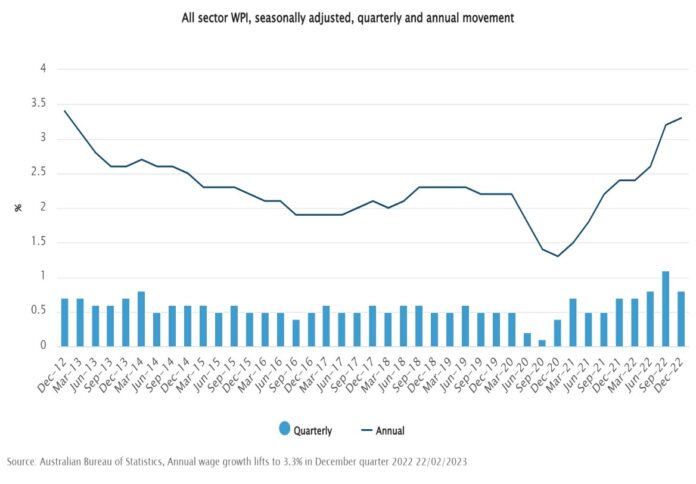
The Australian Bureau of Statistics’ (ABS) Wage Price Index (WPI) report for the December quarter showed an increase in wages of 3.3 per cent yearly and 0.8 per cent from the September quarter.
In the private sector, base pay packets rose 0.8 per cent over the December quarter while the public sector also saw a 0.7 per cent rise.
Michelle Marquardt, ABS‘ head of prices statistics, said the increase in hourly wage rates was greater than any December quarter increase in the previous decade.
“This follows on from the September and June 2022 quarters which were also higher than their comparable quarters back in 2012,” Marquardt said.
“In combination, these quarterly increases have resulted in the highest annual growth in hourly wages since December quarter 2012,” the ABS official added.
The private sector recorded a 3.6 per cent annual wage growth, following an increase of 0.8 per cent in December.
The public sector, on the other hand, lagged at 2.5 per cent annual wage growth following a 0.7 per cent quarterly increase.
The accommodation and food services industry saw the greatest quarterly wage growth of 1.7 per cent, while the wholesale trade industry experienced the highest annual wage growth of 4.2 per cent.
Meanwhile, wage growth in the education and training industry was the slowest with 2.4 per cent.
While changes in employment levels and hours worked within the labour market do not affect hourly earnings as measured by the WPI, they can have an impact on average incomes.
These adjustments will be reflected in the Average Weekly Earnings report, which is set to be released today, 23 February 2023.




















